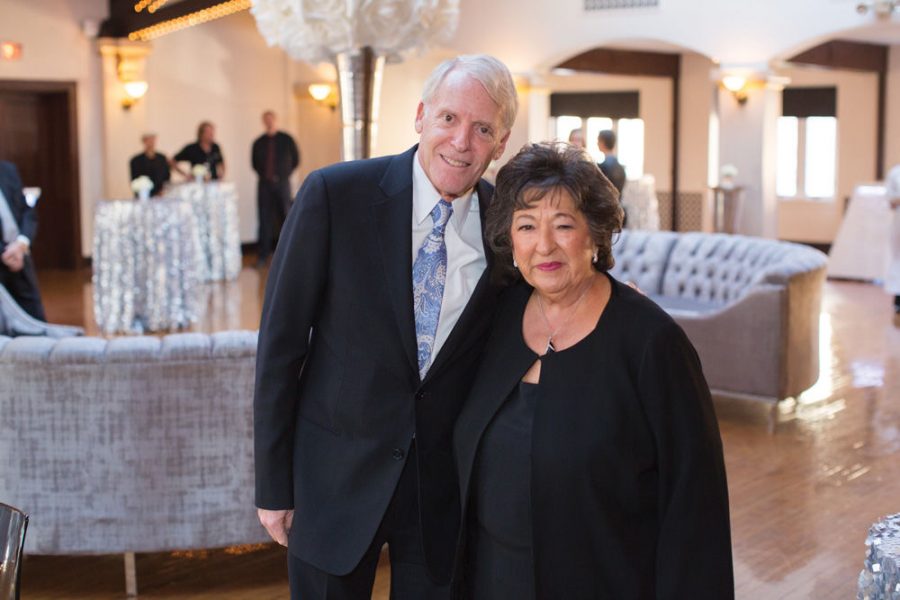Musical theater: The enduring, dynamic art form thrives in St. Louis arts scene
Published May 2, 2019
Whether or not you’re a lover of musical theater, one can’t help but notice that it surrounds our culture. In 2017, “La La Land” won Academy Awards galore and other recent movie musicals such as “Mary Poppins Returns” and “The Greatest Showman” also captured numerous film awards. You’d have to be living in a vacuum to not know something about “Hamilton,” the Broadway sensation that has played in several U.S. cities including St. Louis at the Fox. And of course, the Muny — the country’s oldest and largest outdoor musical theater — celebrated its 100th anniversary last summer.
“The musical is now one of the world’s greatest and most beloved forms of entertainment and art,” says Mike Isaacson, artistic director and executive producer of the Muny, which opens its 101th season on June 10 with the classic, “Guys and Dolls.”
“Borne from an American restlessness, an American zeal for variety and the cultural polyglot that continues to define America, the musical sometimes unites, sometimes smashes together different artistic disciplines-music, drama, the visual arts-to-create something wholly new and fresh and inspiring,” Isaacson continues.
“It isn’t a stagnant form. It continues to stretch and evolve and shed skin, always a reflection of our still young nation finding itself. Yesterday’s ‘Oklahoma’ is today’s ‘Hamilton’ — both reflect a boldness and humanity and yearning that is uniquely American. The musical is America’s gift to the world, and we’re all lucky to receive it.”
Judith Newmark, the Post-Dispatch’s former longtime theater critic who now freelances for the Jewish Light, adds, “In the Muny’s early years, St. Louisans debated what kind of shows best suited the enormous open-air theater in Forest Park. Operettas? Revues?
“But in the 1950s the Muny blossomed with a kind of show that didn’t even exist when it was built: musicals that told absorbing, socially astute stories through rich, romantic songs. They were written during a period that stretched from the 1940s into the 1960s, a period today known as musical theater’s Golden Age. The Muny was well positioned to give those shows first class productions as soon as they were available. With its size and polish, the Muny matched the proportions of shows by such Golden Age artists as Cole Porter and Irving Berlin, Frank Loesser and Leonard Bernstein, Kurt Weill, Lerner and Loewe, and above all Rodgers and Hammerstein.”
While thumbing through an old theater Playbill, I found a quote that really resonated: “Research has found that the human brain remembers language better if learned through singing.” I then was looking through a few books belonging to Scott Miller, founder and artistic director of New Line Theatre, and found a similar quote, “The best musicals have everything the best plays have — great words, great characters, great emotions, great drama and comedy, timeless themes, universal truths. But musicals also have music.”
No matter how you slice it, words alone can never have the dramatic power or intensity of emotion that music possesses. The great director and teacher Konstantin Stanislavski said “the abstract language of music is the only direct way to the human heart.”
Many folks think of musical theater as tra-la-la with no meat or core. After reading some of Miller’s many books, I saw shows such as “Oklahoma” in a much more meaningful and sophisticated way.
Miller told me he sees the American musical theater as an art form that has never been more vigorous or more adventurous than it is right now. Sex, drugs and rock and roll have collectively become the life-blood of this new post-modern Golden Age, an era rejecting the mid-century morality and modernism of Rodgers and Hammerstein, with rule-shattering shows that began in the mid-1990’s like “Bat Boy,” “Rent,” “Hedwig and the Angry Inch,” “Songs for a New World,” “The Bomb-ity of Errors,” and others.
“Any good musical—or play or movie or novel for that matter — is about important issues, either on the surface or more subtextually, and there’s no reason to pretend otherwise,” added Miller, whose New Line Theatre will stage the musical “Be More Chill,” which looks at life during the digital age, beginning May 30.
As Miller and others point out, musical theater isn’t some ancient, irrelevant invalid, but rather a thriving, vigorous art form that gives us an exciting forum in which to talk about our world and try to figure things out. After all, why bother doing “Carousel” or “Camelot” or “Cabaret” if its issues don’t speak to our times as well as its own?
In St. Louis we are blessed with dozens upon dozens of theatrical groups, which produce high-quality musicals. Jack Lane of Stages St. Louis, which opens its 2019 season May 31 with “The Boy from Oz,” says, “Musical theater is the great American tonic. It is a thirst quencher in our parched society. It combines the three great disciplines of acting, voice, and dance and orbits them into the musical.”
One could see musical theater pieces almost every night of the week in all sorts of interesting venues literally all over town.















